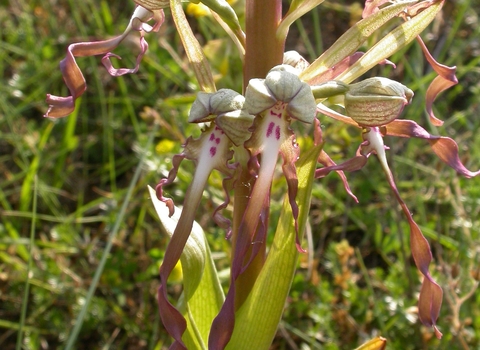
©Bruce Shortland
Lizard orchid
The petals of the rare Lizard orchid's flowers form the head, legs and long tail of a lizard. They are greenish, with light pink spots and stripes, and smell strongly of goats! Spot this tall plant on chalk grasslands and dunes in the South East.
Scientific name
Himantoglossum hircinumWhen to see
June to JulySpecies information
Category
Statistics
Height: up to 1mProtected in the UK under the Wildlife and Countryside Act, 1981.
